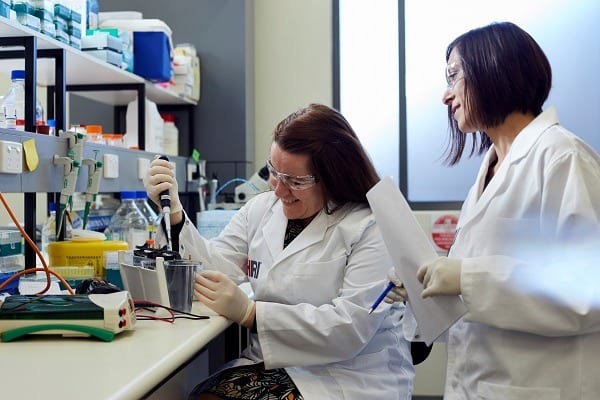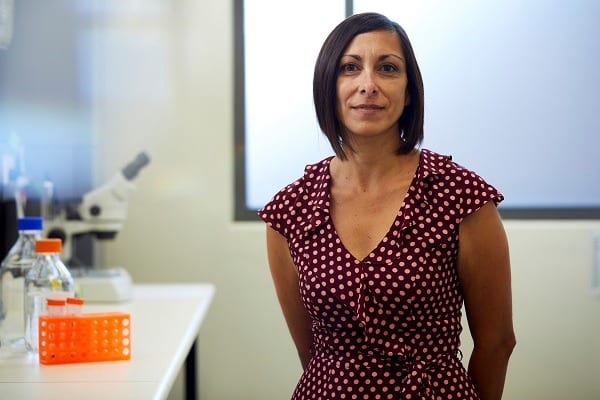I love being a scientist. We start with a problem and work to find a solution that betters a core audience. But there’s one problem the science community hasn’t yet found a solution for – how to ensure equal opportunities between genders.
The fight for funding in science is a hard slog. As an advocate for young women studying STEM, it’s important that I’m realistic that the road ahead for women in science is tough. Scientists receive funding from Government bodies, foundations, philanthropy and private donors. With limited funding to be shared and each of our research projects focusing on a very specific cause, the only way to be considered is to prove your worth. And proving your worth takes time. It takes time in the lab, on the tools, researching within your team, and making sure the right people know who you are. Like many jobs these days, proving your worth as a scientist involves an equal balance of hunger, commitment and resilience.
******************
Work in STEM or have aspirations to do so? Sign up to The STEM Wrap, our weekly newsletter for women in STEM.
******************
However, there’s often an imbalance caused by circumstances for women.
There is already an inherent bias that women cannot take on STEM positions.
Women take time out to have families and this poses an enormous strain on their ability to stay competitive.
I was awarded a prestigious National Health and Medical Research Council (NHMRC) Fellowship to work at the University of Cambridge before I found out I was pregnant. So that I could progress my career, I took up this Fellowship and moved to the UK with my family 10 weeks after the birth of my first child. We lived in the UK for two years; I worked while my supportive husband stayed at home to look after our daughter.
Unfortunately, many women do not have the circumstances that could allow for such opportunities like working overseas, or attending that important conference, or networking – all of which are crucial to staying competitive.
Many women need to be the primary carer.
While I took six months maternity leave for my second child, I came into the lab one day a week, managed a team off-site by emails and phone calls, and continued with my extracurricular activities; honorary work to give back to the research community, necessary to apply for funding. If I didn’t do this while on maternity leave, I would fall behind, and be less competitive to attract funding compared to male colleagues.
And it doesn’t stop there.
Women are the first point of call when children are sick. When I came back to work full-time, I would always get the call from daycare before my husband, and I would usually be the one to have to leave work to collect our sick kids. This meant I would need to work crazy hours to make sure my research was ticking along at an acceptable rate.
What I’m saying is – if you want to try and ‘have it all’ while also fighting to remain competitive in research, you better be ready to go several rounds.
While funding is not that different between gender during early scientific career years, this changes dramatically as you get higher in ladder. This year, only 5 Level 3 NHMRC Investigator grants were awarded to women vs. 37 funded to men.
Luckily, there is a supportive network at the Heart Research Institute, where I’m currently working on a new treatment to prevent limb amputation due to cardiovascular disease. I am able to work from home if I have a sick child, or at times can bring my children into work.
Having a supportive community where kids are welcome is welcomed by me.

For women in general, if it’s not work that’s defining our mental load, it’s everything else. It’s being an Uber driver for the kids, taking them to their sporting activities, being a good wife, a daughter to be proud of, a friend that doesn’t cancel.
We have women at multiple levels at the Heart Research Institute, and a mentorship program purely for grant applications, which can be hard enough to decipher without the mental load. As a wider scientific community, we need to start employing and nurturing women throughout their entire careers in science and celebrating mentorship programs within organisations that support this goal.
The fight for funding is always challenging, but we need to do more as an industry to nurture more women in science. This is especially true in the middle and upper levels, where we are losing amazing, talented minds because there are limited support systems in place either for re-entering the scientific community after maternity leave, at least without serious career deficit, or just for staying competitive amongst our male colleagues.
About Heart Research Institute
Heart Research Institute is an internationally-recognised medical research institute that performs ground-breaking cardiovascular research. Its mission is to prevent suffering from cardiovascular disease, including stroke, through an understanding of the biological processes that cause atherosclerosis and thrombosis, the underlying causes of most heart attacks and strokes. The Heart Research Institute comprises over 150 scientific collaborators who work together to conduct scientific and clinical research work – as today’s research is tomorrow’s cure. www.hri.org.au


